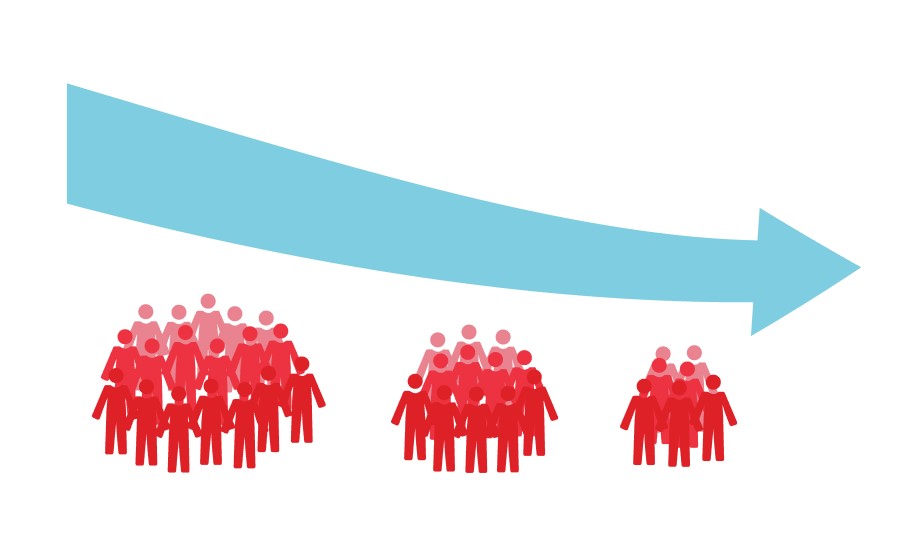Flexible furloughing: the future of the Coronavirus Job Retention Scheme

How is the scheme working?
We initially saw 500,000 businesses furloughing employees in April. This quickly doubled in May, but anecdotally most employers have now furloughed most/all affected employees. As lockdown eases, some employees are being brought back to work either permanently or to cover specific projects before being re-furloughed.
The scheme represents welcome breathing space for employers who have not been forced to make employees redundant only to be faced with search, selection and training for new staff as the economy reopens – a substantial cost saving and a benefit in terms of maintaining employee loyalty in unprecedented times.
What to do if you need to amend errors in claims
The claims process has been complex with unavoidably last minute guidance. HMRC has promised that claims already submitted can be amended in due course, but the functionality is not yet available. If you have made errors in previous claims, do not try to compensate for these in later claims. Instead, you must wait for HMRC to provide the amendment function.
What is changing?
June 2020
CJRS will be closed to new entrants from 30 June 2020. So to qualify, three weeks’ furlough must have been completed by 30 June and relevant employees must have been furloughed by 10 June 2020.
This leaves very little time for employers to determine which employees they will need to furlough between now and 31 October when the scheme closes. You will need to consider potential business activity and staffing needs for the next five months. There will be a certain degree of crystal ball gazing for some, but remember you can bring employees back to work part-time from 1 July 2020, however you can’t furlough anyone new after 10 June.
The changes also introduce a new limit to the number of staff who can be included on a claim. This will be based on the maximum staff ever included in any single pre 1 July claim. This means that staff can be rotated on furlough but take care with the number of workers in each claim.
July 2020
From 1 July 2020 furloughed employees can be brought back for any amount of time or any shift pattern.
For the hours that the employee is working, the employer must pay their normal wages. For the time that they are not working, you can still claim 80% of the wages (capped at £2,500 per month) and the associated employer National Insurance Contributions (NICs) and minimum employer pension contributions. The split of time is based on the normal number of hours worked in the claim period. Both hours worked and usual hours will have to be reported in a claim.
31 July 2020 is the deadline for making any claims in periods to 30 June 2020. Thereafter claims can be made for a minimum period of a week and a maximum of a calendar month. Claims cannot be made for periods which overlap calendar months going forward.
August 2020 onwards
From 1 August 2020, employers will continue to be able to bring furloughed employees back to work, but the funding from the government will reduce to:
- August - 80% of wages (capped at £2,500 per month) for the periods where the employee is not working, but employers will be required to fund the associated employer NICs and employer pension contributions.
- September - 70% of the wages (capped at £2,187.50) for the periods where the employee is not working, employers fund the additional 10%, plus employer NICs and pension contributions.
- October - 60% of wages (capped at £1,875 per month) for the periods where the employee is not working, employers fund the additional 20%, plus employer NICs and pension contributions.
The scheme will end on 31 October 2020.
Actions you need to consider
- Plan your staffing needs now for the next five months.
- Furlough any further staff by 10 June 2020.
- Consider new HMRC guidance being issued on 12 June 2020.
- Consider bringing back furloughed staff on a part time/flexible basis from 1 July 2020. Their written agreement must be obtained first and this represents a change of terms of employment.
- Keep records of hours worked/not worked each week on which to base claims.
- Check your software/agent is capable of making claims on the flexible basis.
- Make all claims for the period(s) up to 30 June by the new deadline of 31 July 2020.
For more information contact the author, Caroline Harwood, partner and head of share plans and employment tax at Crowe U.K. LLP.






